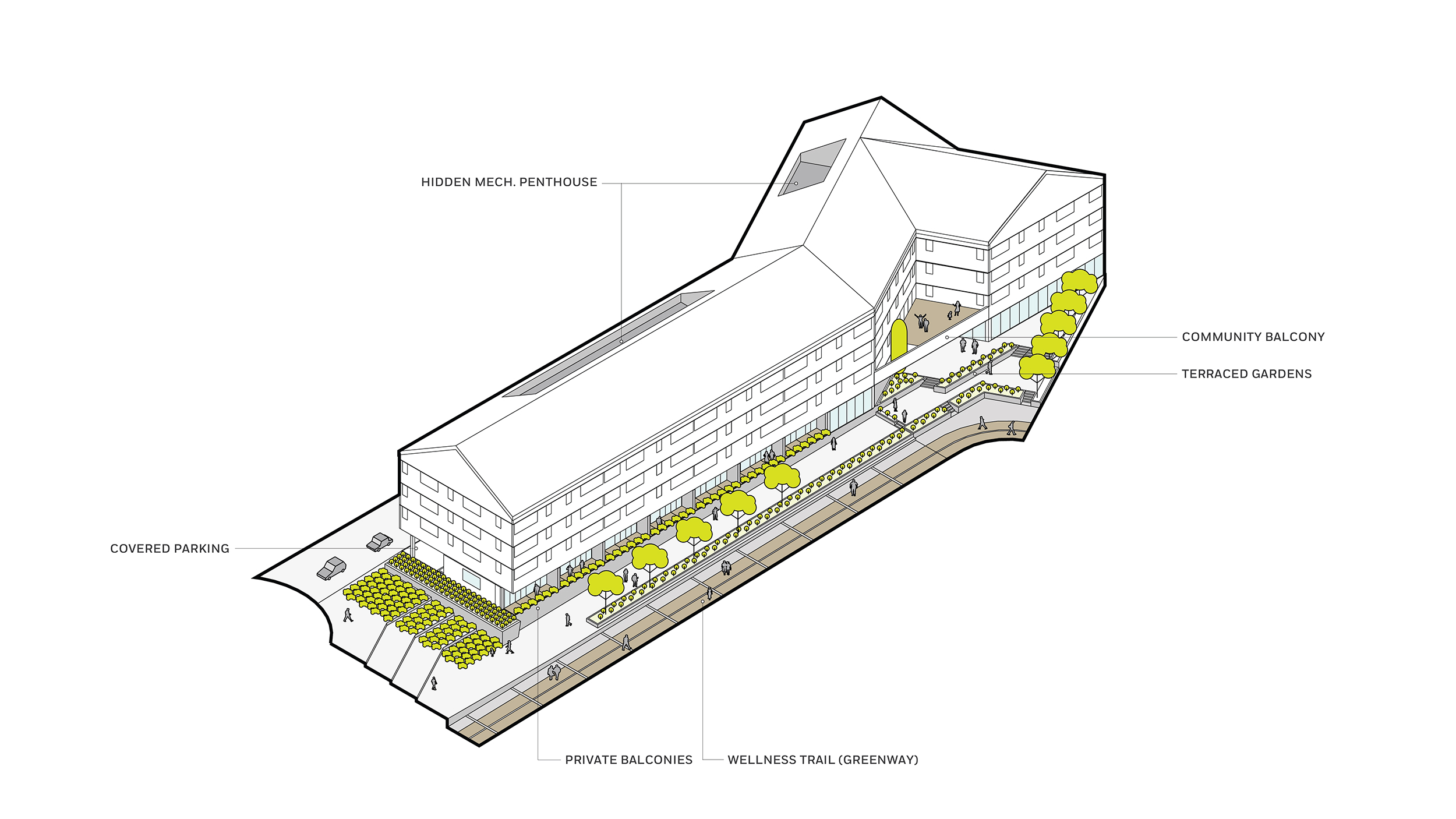Recent Project
The Howard _ 2022
Greenway Living
On the surface, trail access may seem like nothing more than a convenience for a niche community looking for leisure and recreation opportunities. But considered in a larger social and economic context, the strategic planning of soft surface, single-track mountain bike trails combines recreation with transportation infrastructure, seamlessly integrating nature into the urban fabric. Northwest Arkansas is channeling its distinct geographic, cultural, social, and economic identities towards an innovative approach to urban development.
The Howard is a new 80-unit multi-family property in downtown Bentonville. The building is located at the intersection of Central Avenue, the Razorback Regional Greenway, and Town Creek Branch – literally a merger of roads, trails, parks and urban waterways. Given the position on the Greenway midway between two important cultural destinations – Crystal Bridges, and the Momentary – design drivers for siting the building were to create a midway destination for trail users, to activate the trail frontage of the building, and engage trail users with building residents, creating a notable destination along the trail.
The building’s position gave the opportunity to rethink the spatial relationship between the building, trail, and Town Branch Creek, imagining the creek not as peripheral drainage, but as an active public space and asset to the site. Early inspiration was drawn from waterside buildings that utilized waterways as active, productive frontage, recalling traditional sawmills and grist mills frequently found in Arkansas and vital to early economic development. These buildings, like Van Winkle’s Mill in Hobbs State Park and the Boxley Gristmill in the Boxley Valley area of the Buffalo National River, were equal parts buildings, infrastructure, and manufacturing, but not limited to remote regions of rural Arkansas.
The building is located equidistant from the front door of Crystal Bridges Museum of American Art and The Momentary, two important cultural venues in Bentonville. Design drivers were to create a midway destination for trail users, and to activate the trail frontage of the building and engage trail users with building residents. The building’s form and entry sequence were also designed from the vantage point and perspective of the trail user, with key viewpoints established early in the design and continually referenced. A bend in the building’s geometry makes a formal transition from trail frontage to the façade facing the busy Central Avenue. The result is a triangular shaped void, located at the apex of the site, that forms a public entry plaza with an occupied communal roof deck for building residents. The façade of the building folds into and under the covered roof deck, creating a seamless visual transition from public to private. This condition becomes a key terminating view from the north as one approaches from the Razorback Greenway.
This level of site specificity also creates a unique spatial experience that’s essential to placemaking. The folds and bends in the geometry of the building, combined with the connection to the trail, create an entry sequence that resulted from and can only be found on this site. Likewise, the building offers a unique layout of apartment units that won’t be found in other projects. Porch units that overlook patios, the Greenway, and Town Branch Creek are a product of the unique conditions of this site and give residents a front row seat to trail activity and the creek’s natural beauty. Canopy units along the north of the building put residents in line with the tree canopy along the creek filter morning light and connect residents with the mature tree canopy. The corner units at the northwest apex of the building have generous living rooms with panoramic corner views to the trail and downtown.
